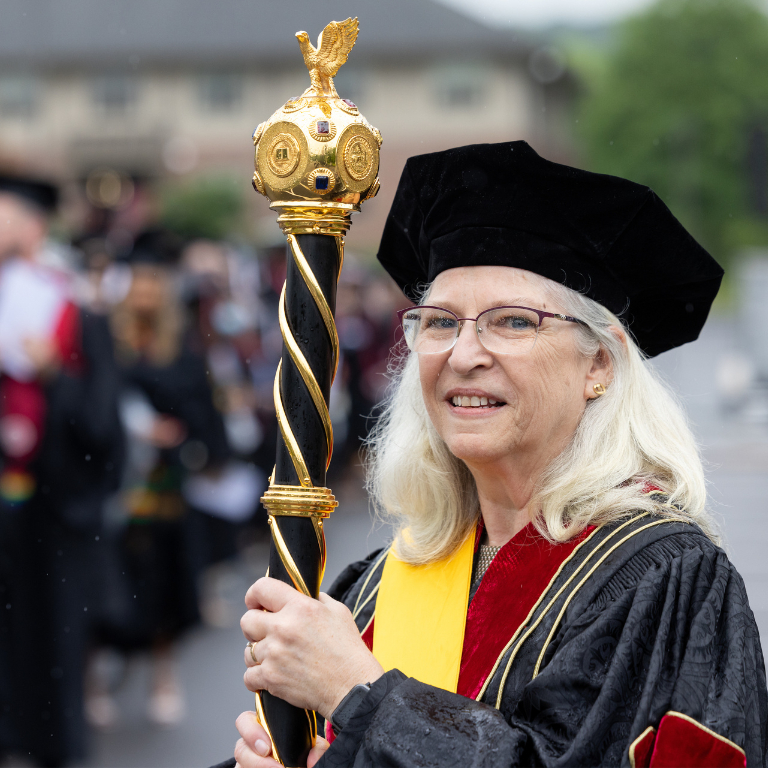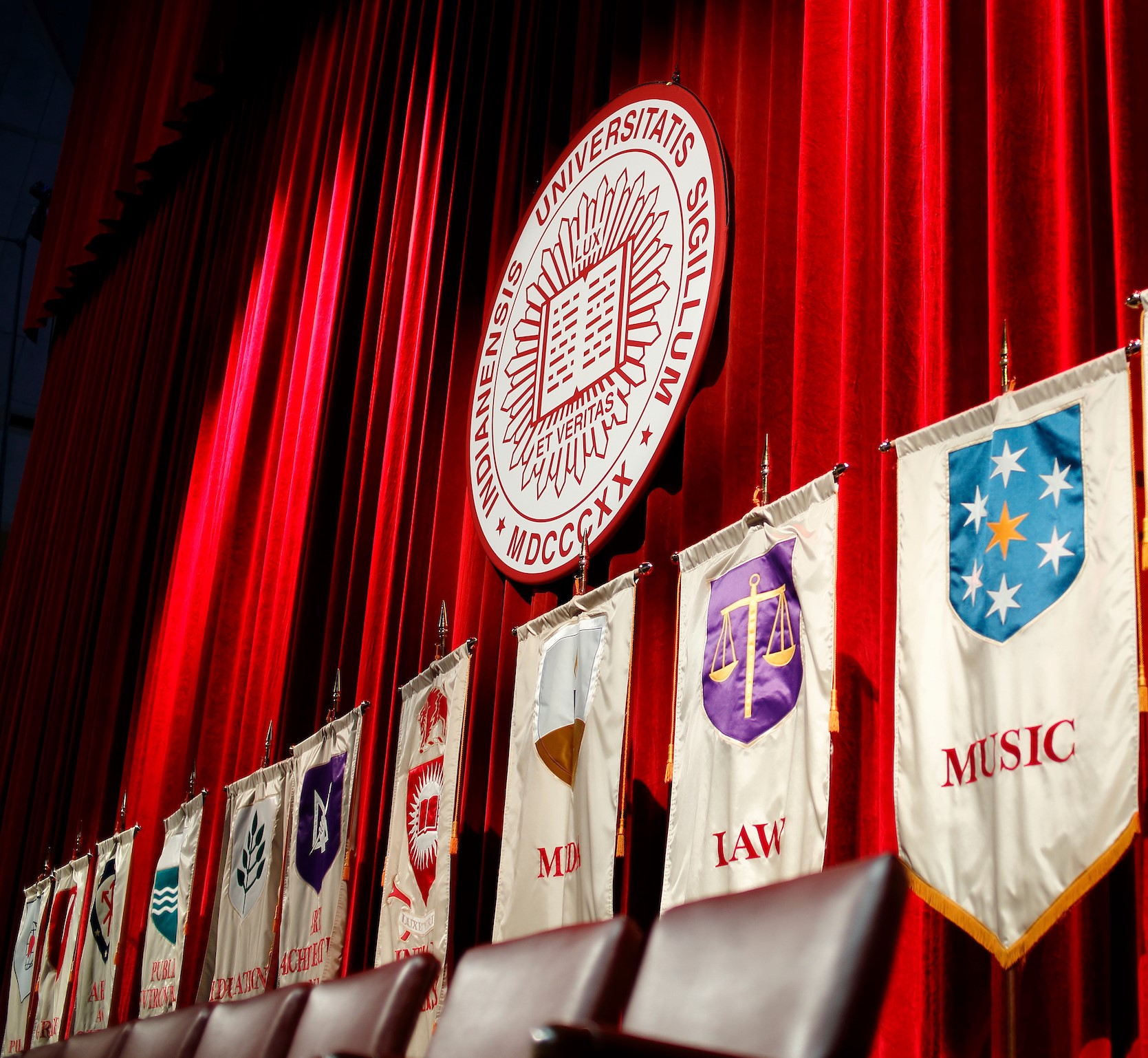Commencement songs are grand, meaningful, and very recognizable. “Pomp and Circumstance” is a part of several military marches written by composer Sir Edward Elgar. The section often played during the procession is from March 1 in D, written in 1901. It was first played at a graduation ceremony in 1905 at Yale University to honor Elgar when he received an honorary doctorate from the school.
The Indiana University alma mater is sung at the IU Indianapolis Commencement.
IU’s alma mater song, “Hail to Old I.U.” is a feature at all kinds of university events, from formal ceremonies to basketball games. The words were written by J. T. Giles and set to a Scottish tune in 1893 so the IU glee club would have a school song to perform at a competition.


